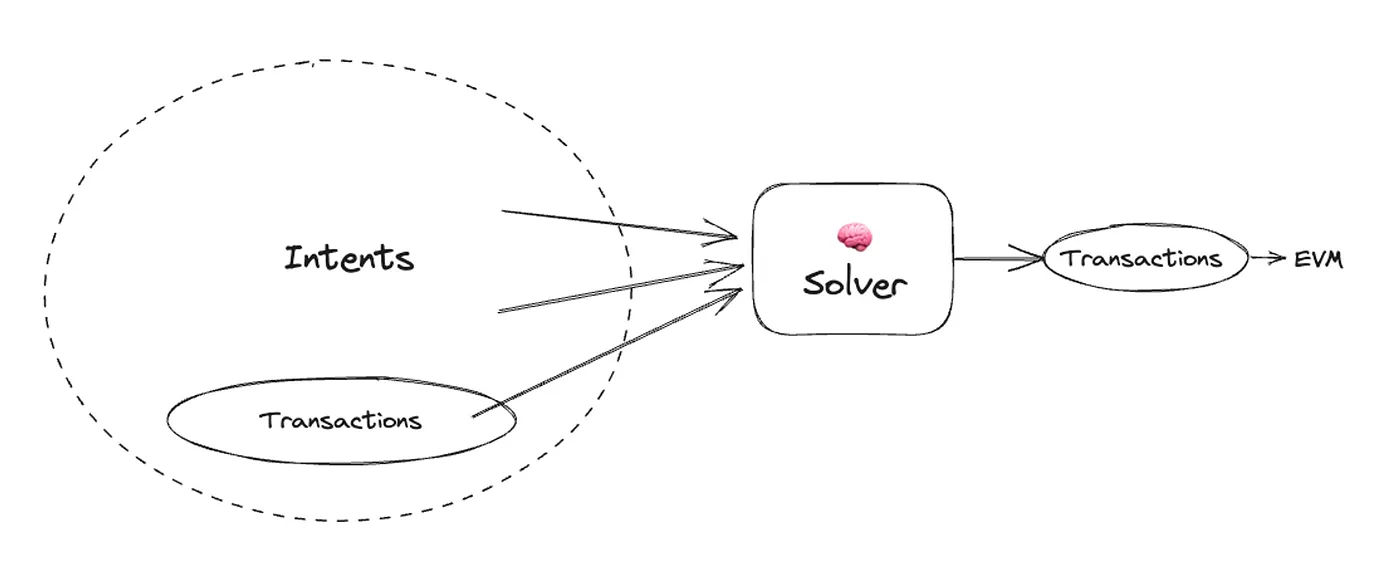In the rapidly evolving world of blockchain technology, new paradigms are emerging to reshape the way we interact with the decentralized ecosystem.

In the rapidly evolving world of blockchain technology, new paradigms are emerging to reshape the way we interact with the decentralized ecosystem. One such innovation that has been gaining traction and generating buzz in the Ethereum community is the concept of “intents.” In this article, we’ll delve into the world of intents, explore their applications, and discuss their potential to revolutionize the way we engage with decentralized exchanges (DEXs) and other blockchain applications.
Understanding Intents: A Shift in Perspective
Traditionally, interacting with blockchain networks involves crafting and submitting transactions in precise steps to be executed. While effective, this approach can be complex, prone to errors, and expose users to the risk of Miner Extractable Value (MEV) strategies. Enter “intents,” a game-changing shift in perspective.
Intents take a declarative approach to blockchain interactions. Instead of specifying the exact actions to be performed, users express their desired outcomes. Imagine stating, “I want to trade X amount of Token A for Y amount of Token B at a limit price of Z.” This succinct intent captures the “what” without delving into the nitty-gritty “how.”
The Role of Solvers: Enabling Seamless Execution
But how are these intents executed? This is where the concept of “solvers” comes into play. Solvers are dynamic agents that bridge the gap between user intents and blockchain execution. They compete to provide the best execution prices for users’ intents, effectively acting as intermediaries between users and the blockchain.
When users submit their intents, solvers vie to settle the orders at the most favorable prices. The solver that offers the optimal execution price is granted the privilege to execute the user’s trade. This competition ensures that users receive the best possible trade execution, fostering an ecosystem of efficiency and fair pricing.
Applications of Intents: Beyond DEXs
Intents offer a wealth of possibilities beyond just decentralized exchanges. They can be employed in various blockchain applications such as limit orders, gas sponsorship, cross-domain transactions, and more. The flexibility of intents allows users to customize their interactions while streamlining the process.
Benefits of Intents: A Glimpse into the Future
Enhanced User Experience: Intents simplify the user experience by eliminating the need for users to navigate complex transaction parameters. This user-centric approach opens the door for broader adoption.
Reduced MEV Exposure: By abstracting away the exact transaction details, intents minimize the risk of front-running and other MEV extraction strategies, ensuring a fairer trading environment.
Competition and Better Prices: The competition among solvers incentivizes them to offer the best execution prices, enabling users to maximize their gains and minimize slippage.
Gas Efficiency: Intents can be batched into a single transaction, reducing gas fees and making transactions more economically viable.
Challenges and the Road Ahead
While intents present promising advantages, challenges remain. Concerns about centralization, privacy, and robustness against MEV strategies must be addressed as the ecosystem evolves. Decentralized protocols are actively exploring ways to strike a balance between user experience and system integrity.
Conclusion: Paving the Way for a New Era
Intents are ushering in a new era of user-centricity and efficiency in the blockchain space. By shifting from the imperative to the declarative paradigm, users are empowered to state their intentions while leaving the intricacies of execution to solvers. As the blockchain ecosystem continues to mature, the widespread adoption of intents could redefine how we interact with DEXs and other decentralized applications, revolutionizing the way we trade, transact, and engage with the blockchain. The future is indeed exciting, and intents are at the forefront of this transformation.
